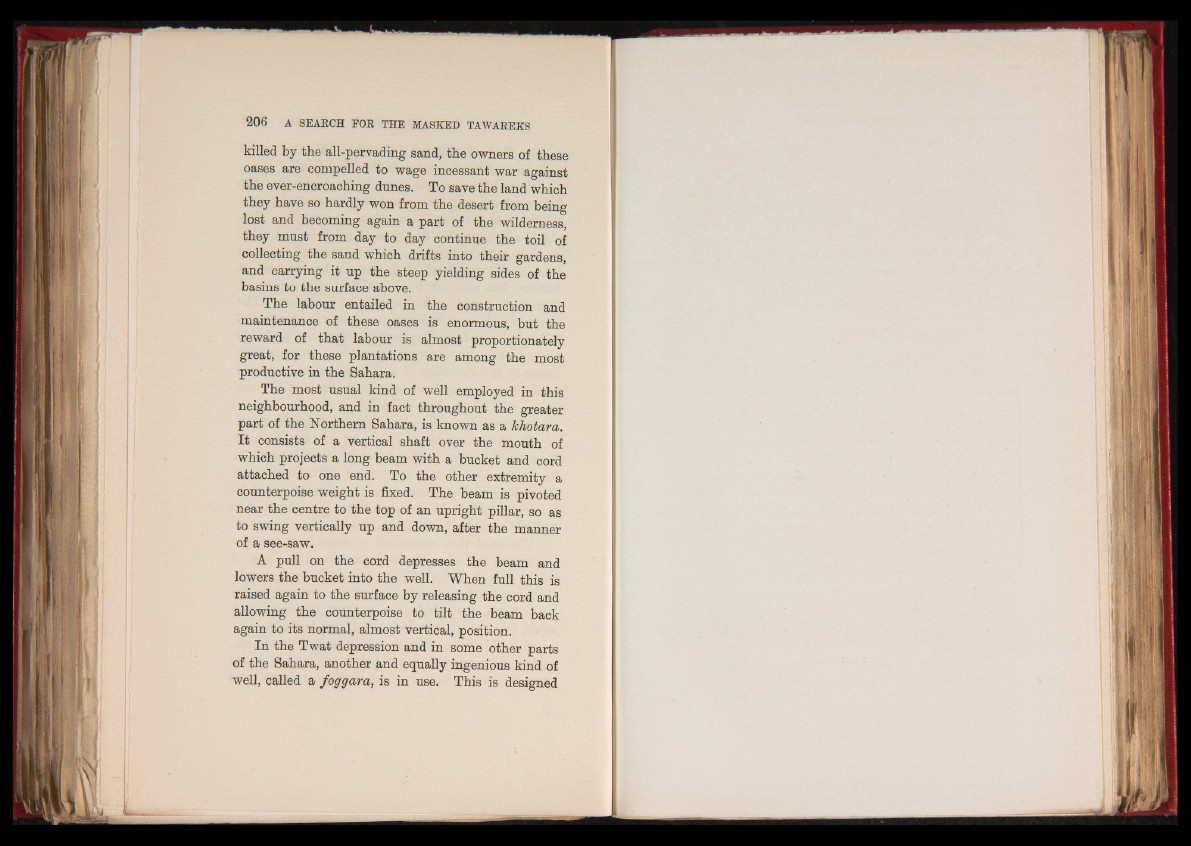
killed by the all-pervading sand, the owners of these
oases are compelled to wage incessant war against
the ever-encroaching dunes. To save the land which
they have so hardly won from the desert from being
lost and becoming again a part of the wilderness,
they must from day to day continue the toil of
collecting the sand which drifts into their gardens,
and carrying it up the steep yielding sides of the
basins to the surface above.
The labour entailed in the construction and
maintenance of these oases is enormous, but the
reward of that labour is almost proportionately
great, for these plantations are among the most
productive in the Sahara.
The most usual kind of well employed in this
neighbourhood, and in fact throughout the greater
part of the Northern Sahara, is known as a Jchotara.
It consists of a vertical shaft over the mouth of
which projects a long beam with a bucket and cord
attached to one end. To the other extremity a
counterpoise weight is fixed. The beam is pivoted
near the centre to the top of an upright pillar, so as
to swing vertically up and down, after the manner
of a see-saw.
A pull on the cord depresses the beam and
lowers the bucket into the well. When full this is
raised again to the surface by releasing the cord and
allowing the counterpoise to tilt the beam back
again to its normal, almost vertical, position.
In the Twat depression and in some other parts
of the Sahara, another and equally ingenious kind of
well, called a foggara, is in use. This is designed